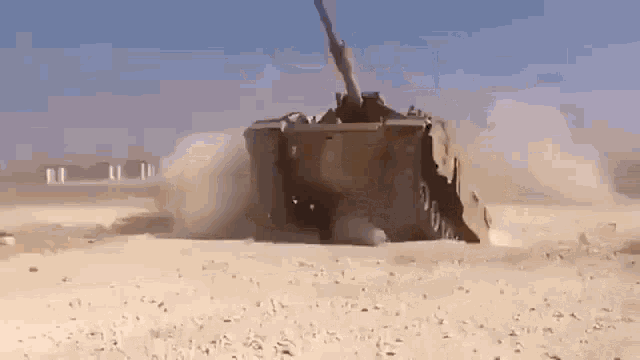Category: Allies

Attack drones credit: Shutterstock
Has the IDF learned the lessons of the wars in Ukraine and Syria in which FPV (first person view) attack drones changed the face of the campaigns? The Ministry of Defense Department of Production and Procurement is currently publishing the terms of a tender to procure 5,000 FPV drones from Israeli companies, which are usually used in drone races.
But in war these drones can squeeze through the narrow opening of an armored personnel carrier or tank, crashing accurately and fatally into a group of soldiers in an ambush, or homing in on the tail of an enemy drone. FPV drones carry much smaller amounts of explosives than UAVs, but the ability to quickly crash into weapons or fuel depots can increase collateral damage by several dozen times.
Unlike the standard off-the-shelf drones that the IDF already uses today, manufactured by companies such as DJI or China’s Autel, FPV drones cannot stay in the air for long, and are not autonomous, but are fully controlled by the pilot, who must be skilled with remote control of the drone, which can easily crash to the ground, if the pilot loses control. Therefore, learning skills and many hours of training are required, involving increased costs and greater selectivity in the number of soldiers who can operate them.
The tender could expand
The estimated price of an FPV drone is lower than an autonomous drone, costing up to NIS 10,000 each at most, but it is possible that the Ministry of Defense will choose the cheapest alternative, drones that cost NIS 3,000. In such a case, the tender is expected to cost the Ministry of Defense no more than NIS 35 million, but it may also be expanded to 10,000 drones, and allow entry of a second supplier, so the cost could rise to over NIS 70 million. Senior figures in the drone industry are counting on expanding the tender to 20,000 drones in the long term.
Globes reported last year that the tender would be issued in August. However, the nature of the tender has changed, and will now it focuses on attack drones only. According to specifications sent to suppliers, this is a small number of drones. The tender requires the immediate procurement of 5,000 drones, which experts say is insufficient. For comparison, Ukraine manufactured 2.2 million FPV drones last year alone.
Others in the drone industry also warn about the issue of security information in the tender, since the required components are analog, and can be easily hacked and located by enemy forces. For example, the video transmitter detailed in the tender is manufactured by Chinese company Team BlackSheep based in Hong Kong.
The industry has been surprised by the unusually detailed requirement of the procurement administration to include items manufactured by certain companies, let alone a company from China. The Ministry of Defense opposed the move, after encouraging the development of a digital communications infrastructure for drones. Cost considerations are apparently behind the request for Chinese equipment, even though Israeli companies know how to offer an alternative communications solution, with a price difference of tens of dollars per unit.
Bat versus Rooster
So far, about 25 Israeli drone suppliers that work with the Ministry of Defense have registered for the tender, including Xtend, Robotican, Tehiru, CopterPix and Dronix. The favorite to win the tender is considered to be The Bat, attack drone made by Petah Tikva-based Dronix. The Bat, a four-bladed drone, can fly a distance of up to 5 kilometers or up to 15 minutes, wth a payload of a thermal camera and explosive charge weighing up to 2.7 kilograms.
Another favorite is Xtend from Ramat HaHayal in Tel Aviv which has already equipped the IDF and the US Pentagon with its Scorpio attack drones. Xtend achieved the feat by becoming the first company in the US to receive approval to operate an armed suicide drone. The company has an existing training and feasibility demonstration system to reduce the training time for drone pilots – from months to a few hours.
However, winning the Israeli tender will require it to remove the secure digital communications infrastructure it developed and install analog communications instead, based on the Chinese equipment requested by the Ministry of Defense.
Another company that bid for the tender is Tehiru, which has made two proposals; one taking into account the analog communications dictated by the tender, and the other with encrypted digital communications in an Israeli format. Another Israeli drone in the category is Omer-based Robotican’s Rooster. The drone can carry 300 grams of cargo and hover for up to 12 minutes at a time, and Sapir also intends to compete by downgrading its advanced drone, the Viper 300, which can fly 5 kilometers and stay in the air for 20 minutes, to meet the tender’s terms.
The tender requires the companies to not only provide the drones, but also travel bags, ground stations, a training systems, service and maintenance, and the establishment of a local production and assembly line. Some Israeli companies, such as Xtend and Dronix, already own such facilities. The deadline for submitting bids was last week, and a supplier conference for the 25 bidders was supposed to take place on Monday of this week, but was postponed for an unknown reason.
No response was forthcoming from the Ministry of Defense and any of the bidders.
Creating the Sherman FIREFLY

Are Revolvers Obsolete?
His buddies on the bench are not amused by this! Grumpy